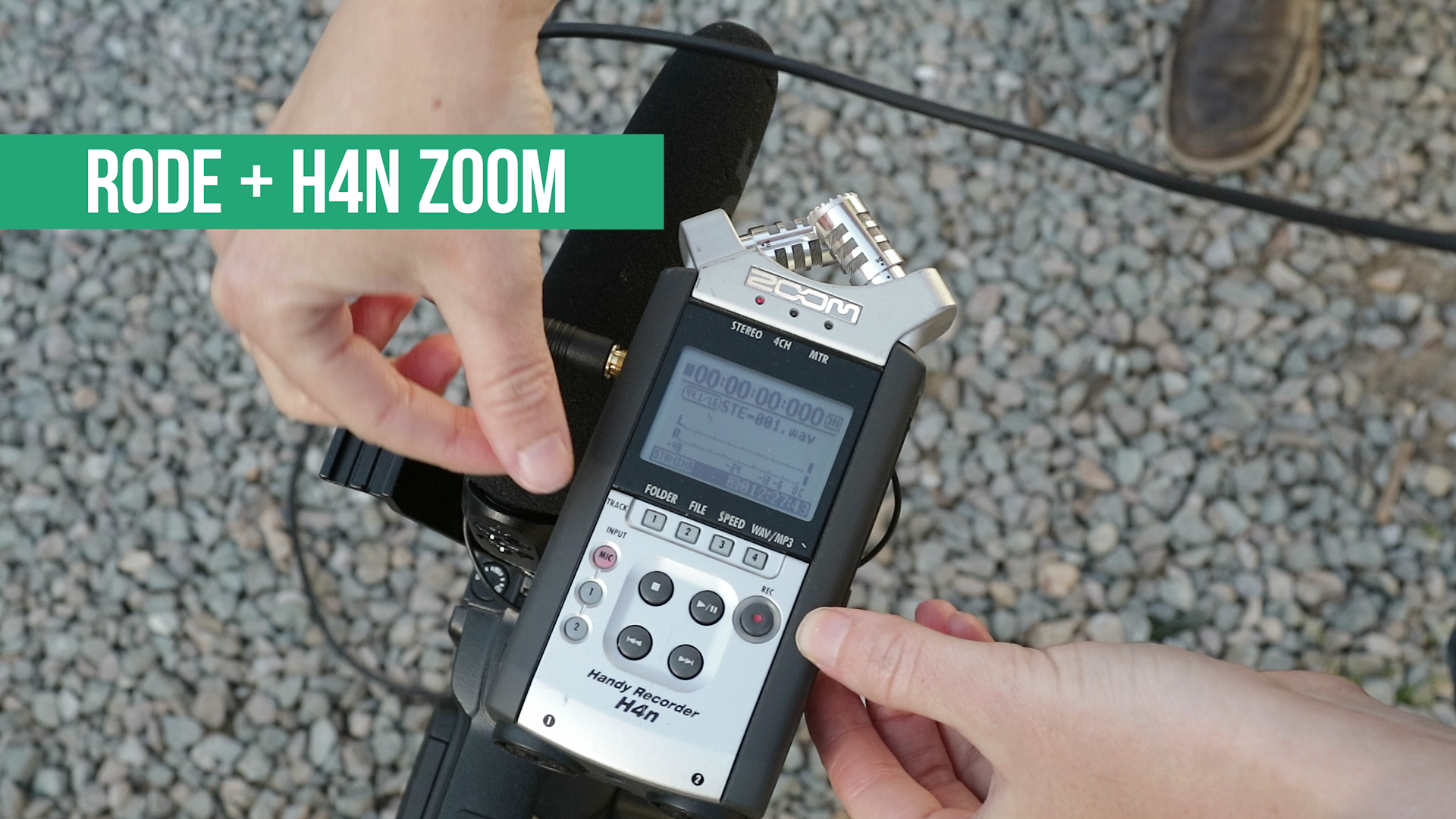Sound for Beginners - Everyday Films Audio Workshop
Premiere Gal Media partnered with Everyday Films to author and produce an audio workshop for beginners. The course will teach you about microphone design and how to record with DSLR cameras. It's divided into three parts:
(1) Microphone Types - What are microphones? How any types of them are there? How do they work?
(2) Microphone Interview Scenarios - Learn how to setup multiple microphones for 1-person and 2-person interview setups.
(3) Audio Clean Up - Learn how to improve and remove background noise in your audio.
Below are the types of microphones covered in the course.
Sound Course Trailer
1. Shotgun Microphones
Shotgun Microphones are designed to record sound directly in front of the mic and attenuate noise from the sides. You can place shotguns on top of cameras via the shoe mount or add it to a boom pole and stand as pictured below. In the course I used a Sennheiser MKE 600 shotgun and a RODE VideoMic Pro.
Shotgun Microphone Kit in Action from Sound Course. (That's my dad on the right).
2. Lavalier Microphones
Lavalier microphones are designed to be pinned on the collar of subjects on screens to capture crisp audio. These are typically used for interviews and for reporters on screen. There are wired and wireless lavaliers, the latter being more expensive as it provides more mobility. In the course I used a SHURE Motive MVL Wired Lav kit for iPhone interviews and a Sennheiser ew 112 wired lav kit for use with DSLRs.
Shure Wired MVL Kit for iPhone.
Shure MVL Kit attached to interview subjects.
3. Handy Recorders
Handy recorders can be used as their own recording devices, but they also provide a wonderful interface to record and save audio files from lavs or shotgun microphones because they have both stereo 3.5mm and XLR inputs. The handy recorder I used in the sound course is the Zoom H4N recorder. In the button below you can click to view my recorder kit.
Using the Zoom H4n Handy Recorder as an interface to record and save audio from the Rode VideoMic Pro.
The H4N records audio to an SD card and you can use the recording levels to control the sensitivity.
4. Handheld Microphones
Handheld microphones can be used for live interviews, events, journalism and more. The design of the microphones pic up noise directly in front and attenuate noise from all sides. You can get wireless handheld microphones that work with mobile phones and computers (which can be used for live-streaming and music on YouTube etc), such as the Samson On-Stage HXD-1 Mic. There are are also wireless handhelds designed to work with professional camcorders and DSLR cameras, such as the Sennheiser AVX e835.
Demo of the Samson On-Stage HXD-1 Microphone with the iPhone 6 iOgrapher Kit (USB Microphone)
Special thanks to B&H Photo for supplying additional microphones and accessories to assist in the production of this sound course. Premiere Gal Media is an authorized affiliate for B&H. Links used in this blog are used as a part of Premiere Gal's affiliate program with B&H Photo and Video.






